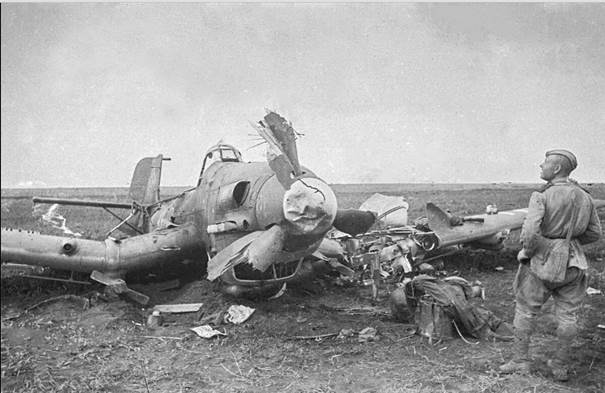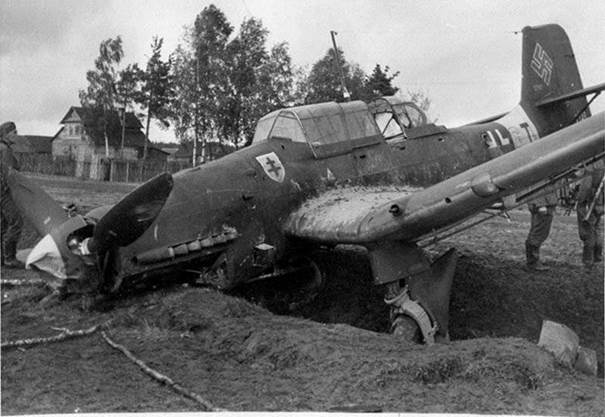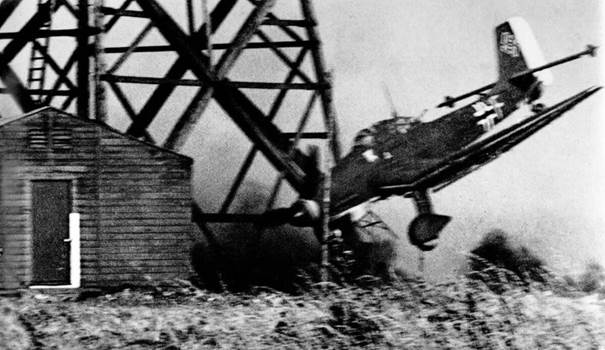German pilots are the best in the world |
It wasn’t written about in our books
I do not condone Nazism in any way, but I admit it as a fact: with the collapse of the Soviet Union, a lot of literature came to light with the note “From the declassified archives of the HKBD (KGB, FSB, MUPa – underline what you wish)”. I’m not even sure that the archivists themselves know how many declassified documents they have. So, all this literature, without telling at all about the events of the Battle of Moscow, the Battle of Stalingrad, about all the other events and about the Berlin finale, with joyful exclamations and rosy bubbles of delight, smeared the information that “The Soviets did not have a niche, and what could be expected from a workers’ and peasants’ state? That’s the case with advanced Europe.”
For some reason, the authors of this literature most often admired the abilities and skills of Luftwaffe pilots: they said that they were so brave, agile and skillful that they could even shave a cow in a meadow and not sneeze once. All the more interesting to me was one historical fact, about which all admirers of Western “craftsmen” prefer to keep silent.
Let’s start with the fact that no army in the world is alien to anything demonstrative. Therefore, do not rush to throw slippers at the modeler who put shining glossy tanks and other models on the diorama – it is quite possible that he depicted preparations for the parade.
So, one day, the highest ranks of the Luftwaffe arrived at the Neuhammer training ground (today this settlement is called Świętoszów and is located in Western Poland). It was for them that demonstration bombing was arranged with the help of Junkers Ju-87 dive bombers.

Formation of “Junkers Ju-87” in flight. Archive photo
Ju-87 – This unsightly, angular dive bomber became the most recognizable aircraft of the Luftwaffe.
For its non-retractable chassis, Soviet soldiers nicknamed it “laptyozhnik” or “lapotnik”. Sometimes it was called “Stuka” – from the German Sturzkampfflugzeug – the designation of all dive bombers.
Bombing in a dive took place as follows.
At an altitude of about 4,600 meters, the pilot of the aircraft searched for the target through a special observation window in the cockpit floor. Noticing the target, he reduced the gas, released the air brakes and performed a 180-degree turn, putting the car into a dive.
The design of the vehicle and the strength of its elements made it possible to bomb at speeds of up to 600 km/h at an angle of 60-90 degrees to the horizon. To control the dive angles, a special graduated mesh was applied to the canopy glazing.
On some models, a siren was installed, driven by the flow of incoming air. As soon as the siren began to howl, it created an acoustic signal for the pilot that the plane was at the optimal speed to drop bombs.
In a dive, at an altitude of 450 meters, a light bulb was lit on the altimeter, after which the pilot pressed the buttons on the control stick and the bombs were dropped. Simultaneously with the drop, the dive exit automatic was activated, and the aircraft began leveling. At this time, the crew had a very hard time, as the g-forces reached values of 6g, that is, a six-fold overload.
As soon as the nose of the Laptezhnik was above the horizon line, the air brakes were retracted to the flight position, the throttle was opened, and the pitch of the propeller was set to climb mode. The aircraft was ready to re-approach the target if there was a margin in altitude and a supply of bombs under the planes.

Formation of German Junkers Ju-87 aircraft. Archive photo.
Perhaps you will ask me: “How come, Von Kraft?! Why do you display Nazi symbols? Isn’t that propaganda?”
I will answer you: “No, this is not propaganda – I condemn Nazism in all its manifestations. Now we are talking exclusively about historical moments, and archival photos carry a historical and cultural meaning.”
I would like to note that the “Stuka-Laptezhnik” had mind-boggling accuracy: it could fit all its bombs into a circle with a diameter of 30 meters. It was precisely these features that the top ranks of the Luftwaffe were supposed to admire. On that day, the commander of the 3rd Air Fleet, Hugo Sperle, the commander of the 2nd Air Corps, Bruno Lörzer, and the commander of the special forces air unit, Wolfram von Richthofen, were present at the training ground.
For training bombing, a flight group of 26 Junkers Ju-87 aircraft was formed under the control of Hauptmann Walter Siegel. The flight mission read: “To conduct a bombing training immediately after dawn at 06:00 on August 15, 1939. Cement bombs with signal smoke flares were used as training exercises.
On the morning of August 15, the airfield service reported low cloudiness over the test site – at an altitude of 900 meters, and the upper limit – at an altitude of 2000 meters.
It was planned that the Junkers would approach the target at an altitude of 4000 meters, then dive through the clouds and at a normal altitude of about 500 meters – that is, already under the lower edge of the clouds – drop bombs, hitting the conditional positions of a simulated enemy.
However, while the group was being prepared for departure, the meteorological situation became more complicated: the clouds descended lower to the ground, occupying an altitude of 750-1850 meters (it was 900-2000 meters). For half an hour of the group’s flight from the airfield to the target, there was a “blurring” of the lower border of the clouds. In this way, the clouds turned into a continuous fog, almost to the ground. Perhaps it would have been possible to warn the flyers of this fact, but Captain Siegel had no communication with the ground services.
Hauptmann Walter Siegel, commander of a flight group of 26 dive bombers, personally led the group’s formation. To his left and right were the planes of his adjutant and technical support officer. All three squadrons flew behind in close formation: first the 2nd, then the 3rd, and only then the 1st squadron, led by Oberleutnant Dietrich Peltz.
After 30 minutes of estimated time, Siegel shook his wings, signaling the group to “Do as I do” to begin the attack. 26 dive bombers lined up in battle formation and began to dive after their leader from an altitude of 3,650 meters.
10-15 seconds passed, which seemed like an eternity to the crews. The milky white veil in front of the windshield of Siegel’s cockpit, instead of gradually dissipating, suddenly became dark. He was only 100 meters above the ground, and behind him, his entire group was diving, unsuspecting!
Walter Siegel shouted over the radio: “Conclusion! Inference! There’s land ahead!” at the same time pulling the handle with all his might.
According to eyewitnesses who saw everything from the ground, when Siegel’s Ju.87 finally leveled off, its landing gear was only two meters above the ground. Siegel had to maneuver desperately to avoid crashing into the trees of a small forest growing on the edge of the field, which was supposed to be the target for bombing.
Both of Siegel’s wingmen were less fortunate: their planes fell into the woods and turned into fireballs. Then all 9 Junkers from the demonstration group of the second squadron crashed into the ground.
The pilots of the third squadron, flying after them, scattered the battle formation, desperately trying to get out of the dive. Planes at extremely low altitude went in different directions. Most of them managed to do it, but still two more Junkers, catching trees, crashed to the ground.


Unsuccessful exit from a dive. Archive photo
Only the planes of the First Squadron, led by Dietrich Peltz, who closed the battle formation of the group, managed to escape unharmed. But there was no secret skill here – pure physics: there were almost two kilometers between them and Siegel’s lead car, so when the Commander One heard Siegel’s scream in his headphones, he immediately ordered his pilots to stop the attack.
As they described the circle, they could not believe their eyes as brown columns of smoke rose into the sky one after another from the planes that had crashed into the ground.
Thus, on September 15, 1939, 13 Ju-87 dive bombers crashed during a demonstration bombing for the highest ranks of the Luftwaffe. All 26 crew members were killed.

A rare shot: a dive bomber colliding with ground buildings. Isn’t it a plot for a diorama? And the stand is quite interesting. Archive photo
Accordingly, the photo above is also one of the options for a stand. Only in the form of a wooden tower. By the way, there are assumptions: what could it be? Let us know in the comments.
Of course, an investigation was conducted, there were investigations, during which everything was attributed to a sudden fog, as the lower edge of the clouds dropped to 100 meters. The planes, of course, were scrapped, and the crews were credited with irretrievable losses.
Well, the descendants of those same surviving Luftwaffe pilots try not to remember this massive disaster of Germany. Or maybe they’ve just forgotten. What do you think?
